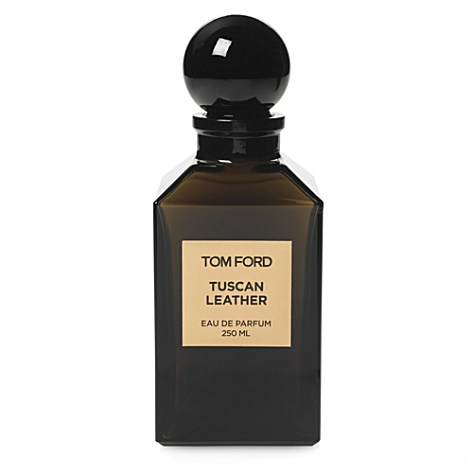
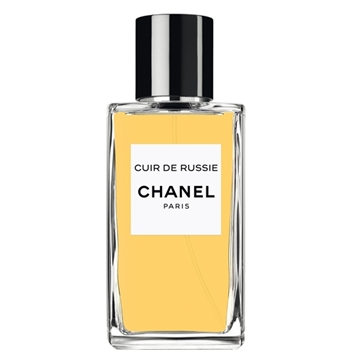
Men's Fragrance: A Renaissance of Leather
January 22, 2011

Disclaimer: The views and opinions expressed herein are solely those of the author and/or guest contributors and do not necessarily state or reflect those of
The Perfume Magazine LLC, Raphaella Brescia Barkley or Mark David Boberick.
All content included on this site, such as text, graphics, logos, icons, videos and images is the property of The Perfume Magazine, LLC. or its content suppliers and protected by United States and international copyright laws. The compilation of all content on this site is the exclusive property of The Perfume Magazine, LLC. and protected by U.S. and international copyright laws.
The Perfume Magazine Banner was designed exclusively by GIRVIN and is the property of The Perfume Magazine, LLC. and are protected by U.S.and international copyright laws. Additional Banner information can be found on our ABOUT page.
All images appearing in the banner are registered trademarks of their respected company and are used with permission.
© Copyright. 2011. All Rights Reserved. The Perfume Magazine LLC
By Clayton Ilolahia
Leather notes in perfumery have existed for more than a century. Numerous threads exist in online perfume forums discussing the beauty of this perfume note. More often than not the perfumes that gain the majority of praise were not recently launched. Many of them are almost a hundred years old. I was interested to read the announcement of fragrance trend predictions by Bell Flavours and Fragrances. The scent of leather rates in their top 10 perfume trends for 2012. This sparked my curiosity. If leather notes have featured consistently in perfume over the past century, how has this note evolved? This trend has been on the horizon with a number of 2010-2011 fragrances containing either Leather or Cuir (French for leather) in their titles. Cuir Fetiche, Cuir Noir, Leather Oud, Mahon Leather, Cuir Styrax and others simply called Cuir have all found their way onto perfumery shelves in the short span of two years.
One of perfume’s most popular leather scents is Chanel Cuir de Russie, released to the world in the 1920s. Like all of the early Chanels, perfumer, Ernest Beaux was the author of this creation. Designed for modern women who lived through les annees folles, Paris in the 1920s, Cuir de Russie is a stunning example of the supple leathery tones a perfumer can impart on a fragrance. Chanel released an eau de toilette version in 2007 as part of Les Exclusifs de Chanel and although it displays all of the feminine floral Chanel signatures, inside lies a masculine base of lightly smoked woods and resins that is perfect for I like to think adventurous males (myself included). A buttery castoreum note paired with musk offers a point of difference in comparison to other leather perfumes that can often feel cold and austere, much like the Russian landscape that inspired their creation. It is said that Cuir de Russie was born from Coco’s encounter with the Grand Duke Dimitri, an exiled cousin of Tsar Nicholas II . He was one of many Russian bourgeoisies who fled Russia to escape execution following the revolution in 1917. Cuir de Russie, with its characteristic birch tar accord recalls the stories of master tanners who utilized the natural birch tree tannins to make quality leathers for the Russian Tsars.
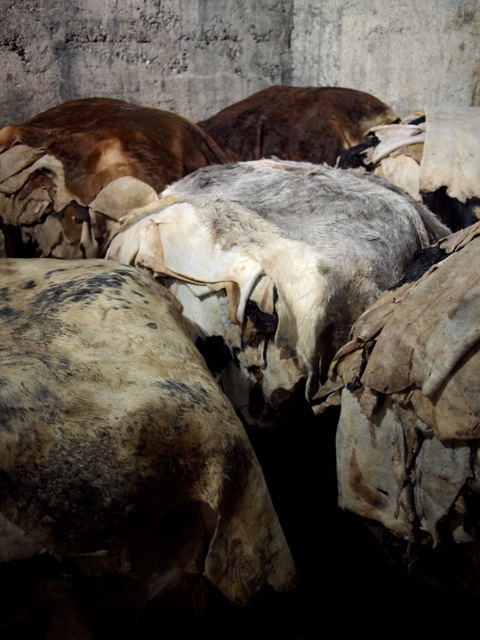
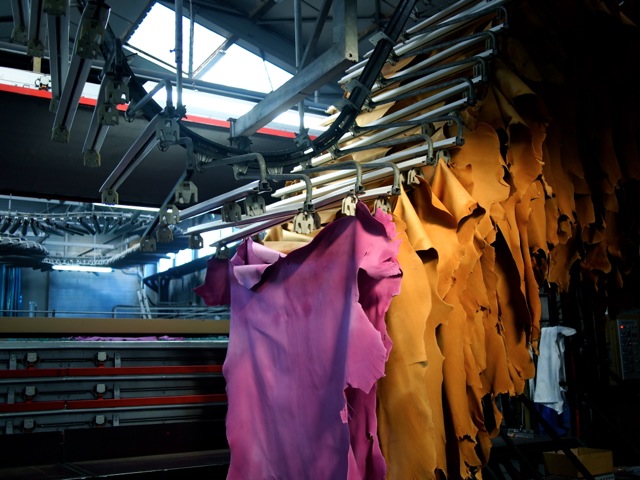
With an interest in experiencing the true scent of leather I recently visited one of France’s premier leather tanneries in the Rhone Valley. The small town of Romans once bustled with activity producing leathers for the luxury car, aeronautical and fashion industries. Their specialty was shoes. Today the town is a shadow of its former self, however a small number of tanneries still produce leather for a selection of the world’s luxury brands.
In perfume, the scent of leather is not distilled or extracted from the leather itself. Instead the perfumer is entrusted with the task of blending raw materials that recall the scent or the sensual texture of leather. Within the tannery there are two areas: wet and dry. The wet tannery receives the hides, a by-product of the meat industry. For most, this is the challenging part of the tannery. The air is damn and humid; it is impossible to escape the all-consuming scent of death and decay. While many perfumers would theorise that one should not discriminate between good and bad smells when evaluating scent, it is certainly a challenging philosophy to uphold when surrounded by walls of salted cowhides. As the hides are de-haired, the tanning process begins. The hides pass through their ‘wet-blue’ phase to take on the characteristics of leather. Skilled tanners monitor progress as the leathers are tumbled in large drums with tannins and dyes. By doing this the tanners can create a variety of textures and grains. In the 1800s before industrial advances, leathers were tanned in large pits using natural tannins derived from a variety of tree barks, leaves and berries. It is from this era of human history the scent of birch tar became associated with the scent of leather. There is also an animalic quality perfumers include in their construction of leather fragrances. Historically animal notes such as musk and civet were used to scent leather gloves, a trend that flourished in 17th century Europe. This animalic scent also recalls the true smell of leather, the combined scent of animal skin and the tannins used to transform it into leather.
Naturally, as Chanel Cuir de Russie experienced great success, other houses soon followed suit. Lanvin Scandal (1933) Lancome Revolte (1936) and L.T Piver Cuir de Russie (1939) are some examples of this growing leather trend of this time period. In the post-war 1940s, Chanel’s signature style was abdicated with classic femininity pioneered by Christian Dior’s New Look. This also meant that perfume needed change, as well. Women’s fragrances became more floral, often sparkling with a variety of aldehydes. This left the leather theme open for men to explore. Perfumers found that leather notes could be harmoniously matched with fougere accords and leather began to play a supporting role in the masculine fougeres and chypres of the late 20th century. In 1981 Chanel revisited the leather theme with Antaeus. Chanel perfumer, Jacques Polge explored similar combinations to his predecessor Ernest Beaux, blending castoreum, woods and resin to create one of the most iconic leather fragrances for men. Paired with green herbs and a toned down floral accord, this could be consider to be the grandson of Cuir de Russie.
Another men’s leather fragrance from this era is Guerlain Derby. Created in 1985, Luca Turin describes it one of the “ten best masculines of all time”. Derby, like it’s peer Antaeus, has all the trappings of a 1980s powerhouse perfume - and today’s man might agree that it is best to halve your application when wearing these retro scents. In addition to its leathery smoothness, Derby contains all of the coveted Guerlain trademarks; powdery shades of vanilla and Tonka bean, balanced spices and in this case, the classic Guerlain chypre structure made famous by many of the house’s previous creations. Guerlain recently returned Derby to their shelves as part of Les Parisiennes, a collection dedicated to reviving old favourites from the house’s archive.
When newer fragrances such as Davidoff Cool Water and Issey Miyake L’eau d’Issey captured the hearts of the 1990s male, fragrances such as Derby and Antaeus were quietly moved to the back of department store walls. Within certain niche brands, leather continued to appear in perfume. In 1996 Serge Lutens began offering a new, exclusive leather fragrance to his clientele atthe Palais Royale Shiseido in Paris. Like much of Luten’s body of work, Cuir Mauresque is influenced by the designer’s life in Morocco. Filled with orange blossom, spices and burnt styrax, Luten’s leather has a delicate sweetness reminiscent of eastern cuisine.
As the world ushered in a new century, another cult leather fragrance was born. Designer, Helmut Lang launched three fragrances before his retirement from fashion in 2005. Years later, Cuiron (2002) is still talked about as one of the best representations of the leather genre. In line with his design aesthetic, Cuiron is a minimalistic, modernist approach to leather; the antithesis of how leather had previously been portrayed in perfume. Light, almost transparent and in eau de cologne dilution, Cuiron is indicative of a period in fashion where ideas were valued more than craftsmanship and heritage. Blended with a plum accord, the leather of Cuiron is expressed through quinolene; an aroma chemical that was first isolated from coal tar in 1885 and now forms an important group of aroma chemicals used in men’s perfume.
As trends change and we return to loving denser woods and spices, there is another consideration as to why there is a resurgence in leather perfumes. To compete in today’s fast moving world of fashion and beauty, brands now need to promote both the quality of their product and the authenticity of the brand to instill confidence in their buyers. In recent years there have been numerous perfume houses resurrected or refurbished by larger parent companies or groups. The dual action of ensuring the product quality ("we use only the finest materials sourced from around the world" - a common marketing tagline) and promoting the brand’s historical importance (clearly displaying the year of inception on company packaging and website) has proven to be a winning formula for success. Leather is a product that is steeped in history and highly regarded as a mark of quality. Incorporating the word leather or cuir into a perfume title gives off an immediate air of nobility, sensed before the bottle has even been sprayed. Many of these modern leathers feature in an elevated or exclusive line within a perfume range. Prada, Armani, Christian Dior and Tom Ford have all recently launched a leather fragrance in this way.
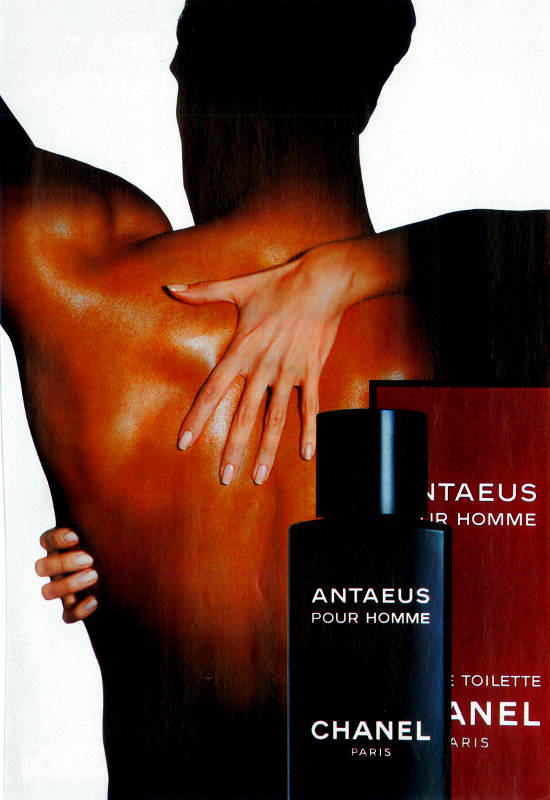
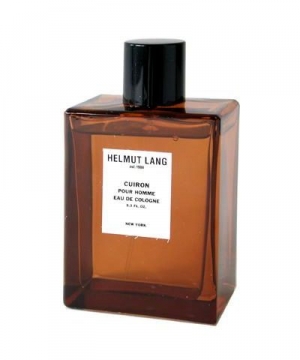
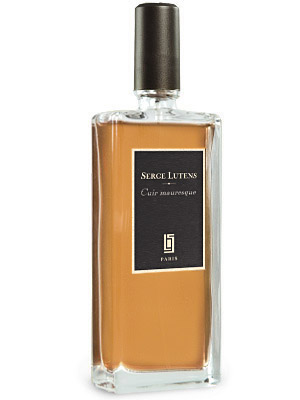
One of the standout fragrances from this new breed is Tom Ford Tuscan Leather, a fragrance launched in 2007 as part of the Tom Ford Private Blend collection. Tuscany is renowned for its leather craftsmanship and is also the birthplace of Gucci, a brand Ford played an integral role in reviving. Similar to Lancome Cuir, Tuscan Leather contains the bitter phenolic scent that is released upon opening a new box of Berluti loafers. This scent of wax and leather is complimented with notes of saffron, thyme and raspberry.
If the predictions of Bell Flavours and Fragrances are fulfilled, 2012 looks set to introduce even more leather fragrances into our restless hands. And if any of these new releases do not strike a chord, there is no shortage of choice already in circulation for you to explore.
Clayton's Picks:
Favourite luxury leather: Chanel Cuir de Russie
Favourite classic leather: Hermes Eau d’Hermes
Favourite new leather: Tom Ford Tuscan Leather
Favourite retro leather: Guerlain Derby
CLAYTON ILOLAHIA | Contributor
Clayton currently works in the management of training and development for the luxury retail sector and has worked with brands such as Louis Vuitton, Ralph Lauren, Gucci and Cartier. A resident of Sydney, Australia, he was born in New Zealand and considers travel one of life’s real luxuries. A perfume collector, Clayton decided to combine his love of perfume and travel in a blog entitled What Men Should Smell Like (www.whatmenshouldsmelllike.com) where he writes about men’s fragrances encountered on his travels around the world. “I graduated university with a degree in Visual Arts. For me perfume is an extension of this study and allows the exploration of creative ideas through the sense of smell”.
